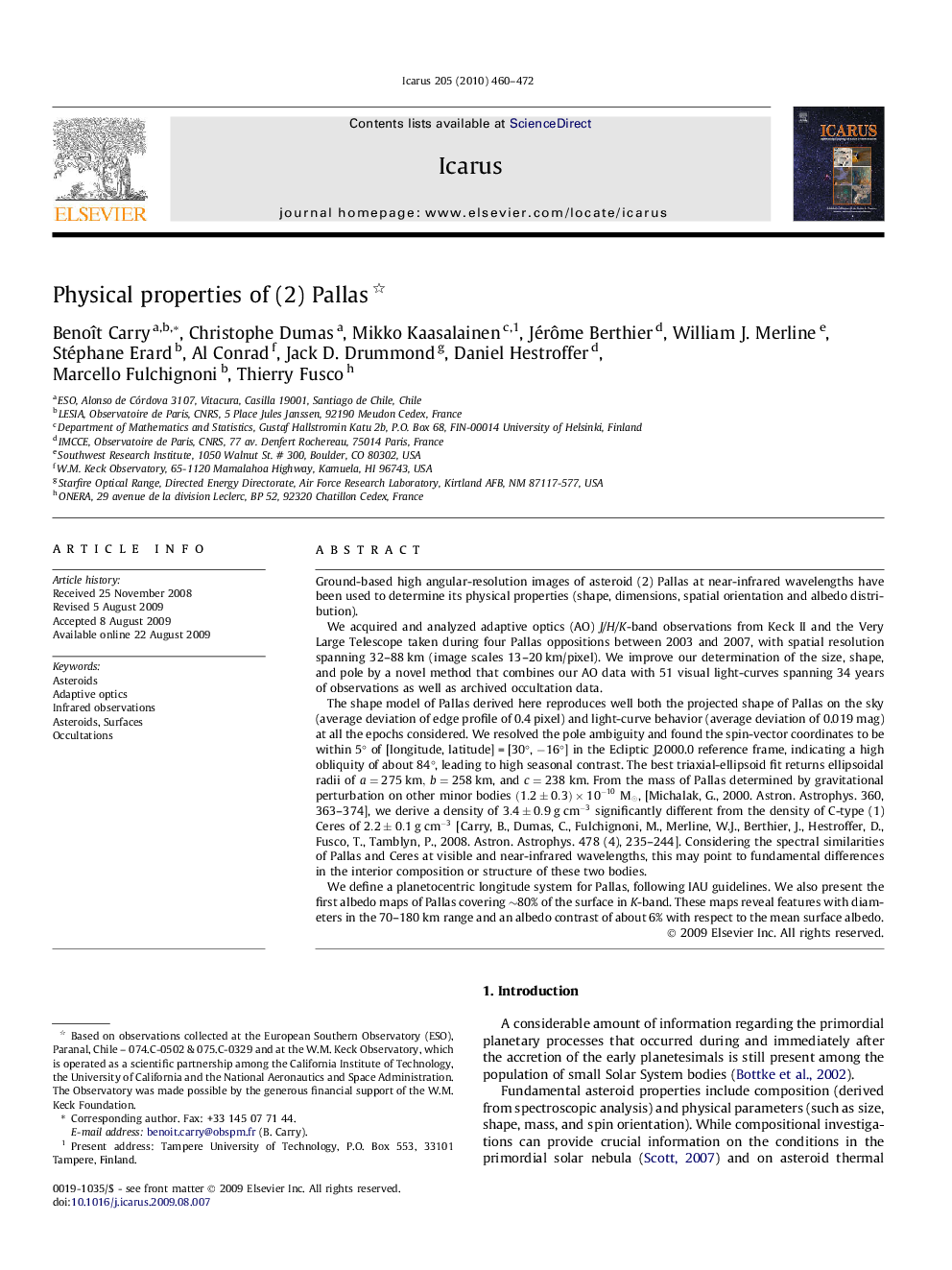| Article ID | Journal | Published Year | Pages | File Type |
|---|---|---|---|---|
| 1774231 | Icarus | 2010 | 13 Pages |
Ground-based high angular-resolution images of asteroid (2) Pallas at near-infrared wavelengths have been used to determine its physical properties (shape, dimensions, spatial orientation and albedo distribution).We acquired and analyzed adaptive optics (AO) J/H/K-band observations from Keck II and the Very Large Telescope taken during four Pallas oppositions between 2003 and 2007, with spatial resolution spanning 32–88 km (image scales 13–20 km/pixel). We improve our determination of the size, shape, and pole by a novel method that combines our AO data with 51 visual light-curves spanning 34 years of observations as well as archived occultation data.The shape model of Pallas derived here reproduces well both the projected shape of Pallas on the sky (average deviation of edge profile of 0.4 pixel) and light-curve behavior (average deviation of 0.019 mag) at all the epochs considered. We resolved the pole ambiguity and found the spin-vector coordinates to be within 5° of [longitude, latitude] = [30°, −16°] in the Ecliptic J2000.0 reference frame, indicating a high obliquity of about 84°, leading to high seasonal contrast. The best triaxial-ellipsoid fit returns ellipsoidal radii of a=275km,b=258km, and c=238km. From the mass of Pallas determined by gravitational perturbation on other minor bodies (1.2±0.3)×10-10M⊙, [Michalak, G., 2000. Astron. Astrophys. 360, 363–374], we derive a density of 3.4±0.9gcm-3 significantly different from the density of C-type (1) Ceres of 2.2±0.1gcm-3 [Carry, B., Dumas, C., Fulchignoni, M., Merline, W.J., Berthier, J., Hestroffer, D., Fusco, T., Tamblyn, P., 2008. Astron. Astrophys. 478 (4), 235–244]. Considering the spectral similarities of Pallas and Ceres at visible and near-infrared wavelengths, this may point to fundamental differences in the interior composition or structure of these two bodies.We define a planetocentric longitude system for Pallas, following IAU guidelines. We also present the first albedo maps of Pallas covering ∼80% of the surface in K-band. These maps reveal features with diameters in the 70–180 km range and an albedo contrast of about 6% with respect to the mean surface albedo.
